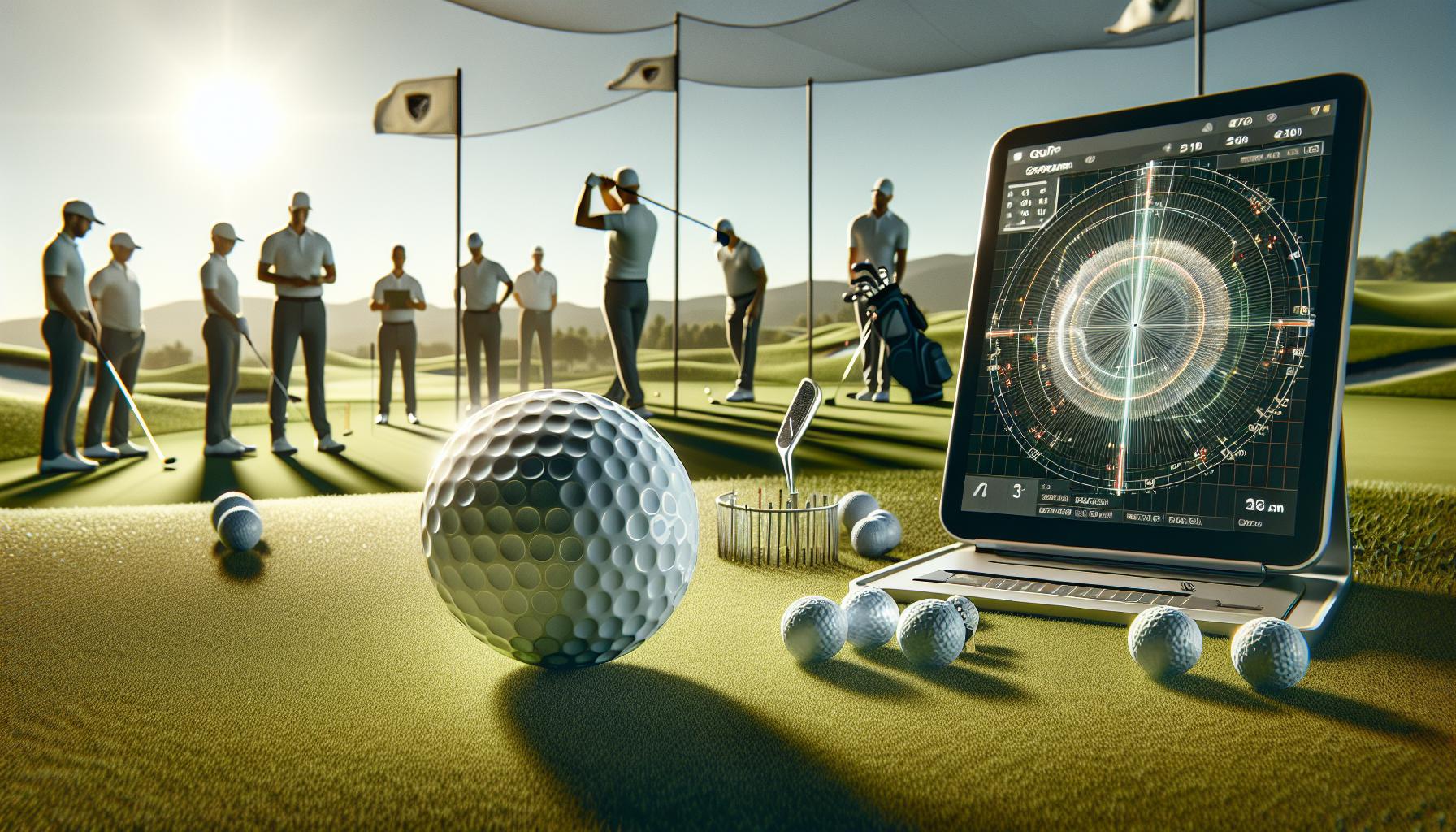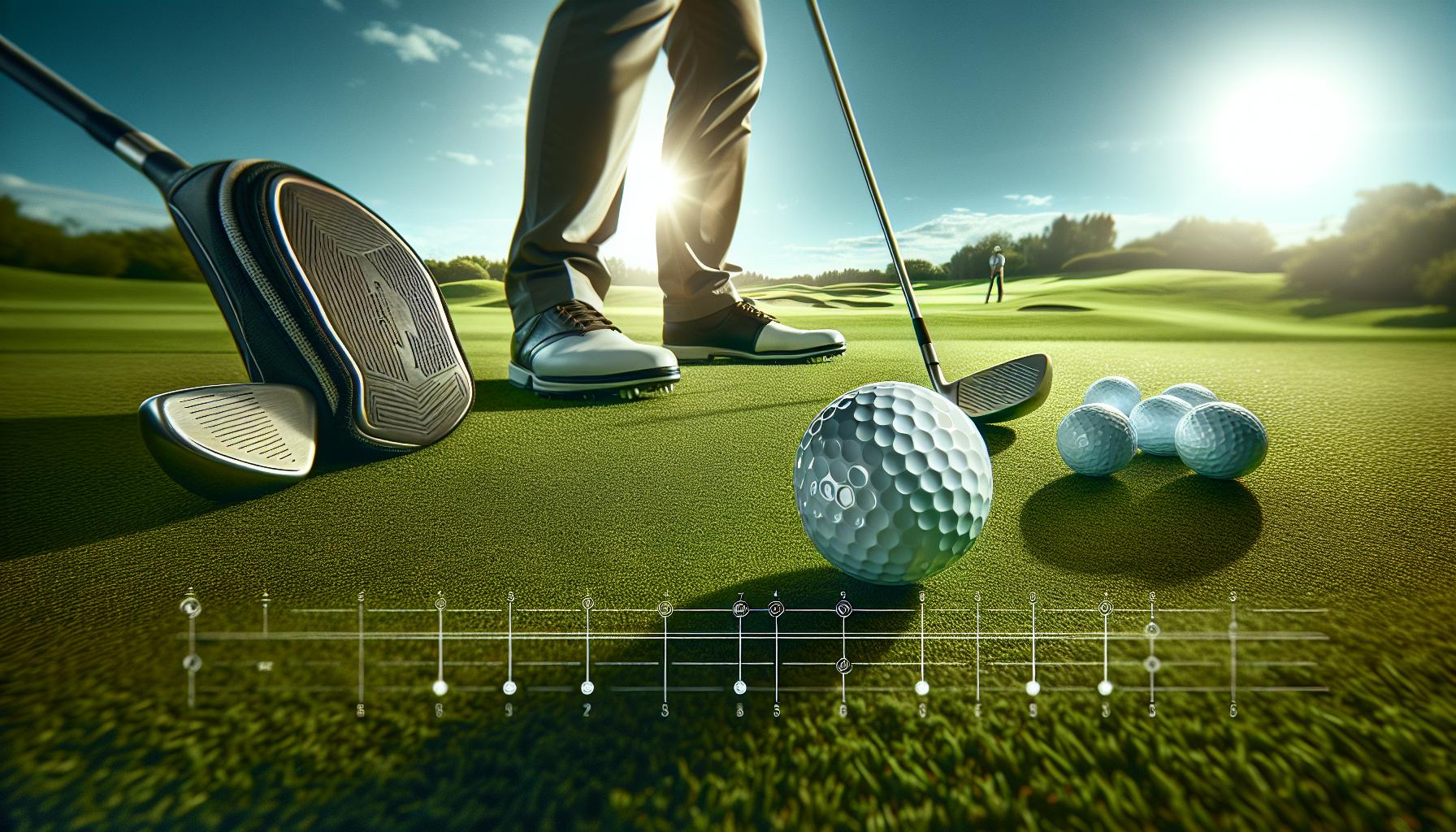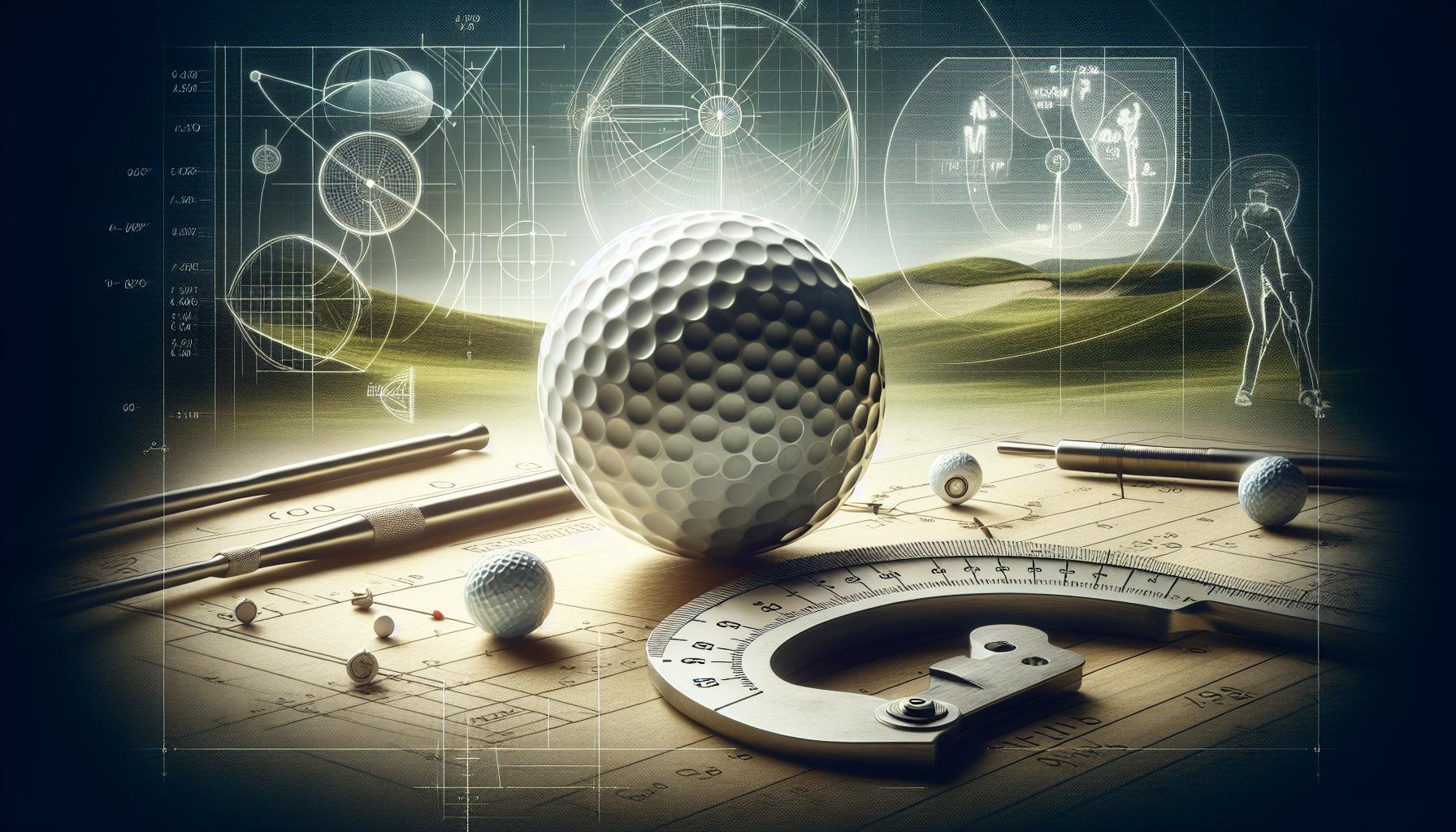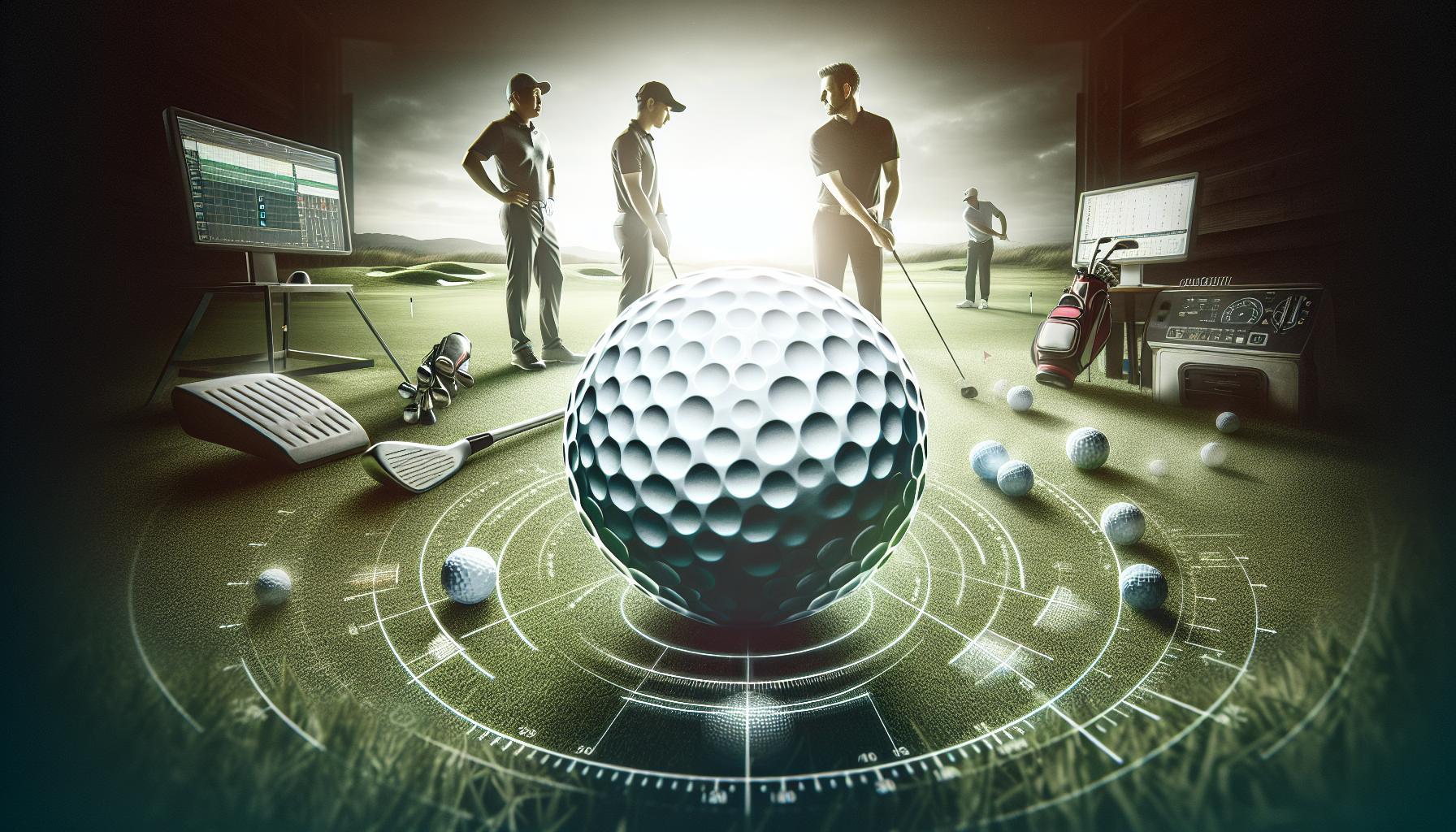Slicing the golf ball is a common struggle that can frustrate players of all skill levels, often leading to lost strokes and diminished confidence on the course. Understanding the root causes of this issue is crucial for improvement and can be the key to transforming your game. Factors like grip, stance, and swing mechanics can all contribute to a slice, making it essential to identify and address these elements effectively.
By delving into the underlying issues that lead to slicing, you can not only refine your technique but also enhance your overall performance and enjoy a more rewarding golfing experience. Whether you’re a beginner seeking to establish good habits or an experienced player looking to fix persistent problems, grasping these concepts will empower you to regain control of your shots and improve your accuracy on the fairway. Let’s explore the key reasons behind slicing and the actionable steps you can take to overcome this frustrating challenge.
Root Causes of Golf Ball Slicing Explained
Understanding why golfers slice the ball involves delving into several interconnected factors that influence the shot’s trajectory and outcome. A slice occurs when the ball curves dramatically to the right (for right-handed golfers) due to improper mechanics, which can largely be attributed to several root causes.
One fundamental reason for slicing stems from clubface angle at impact. If the clubface is open relative to the swing path, the ball will spin clockwise, resulting in a slice. This misalignment can often originate from grip issues or improper stance. Additionally, the path of the swing plays a crucial role; if a golfer’s swing path is outside-in, it exacerbates the tendency to slice. Proper alignment of both the clubface and swing path can significantly mitigate slicing.
Another major contributor is the grip pressure. A grip that is too tight can lead to tension in the arms and shoulders, causing inconsistent swing mechanics and an eventual slice. This emphasizes the importance of a relaxed grip that allows for natural wrist movement. Moreover, swing speed also impacts how a ball reacts on impact. If a golfer swings too fast without proper control, they are more prone to errors in their swing mechanics, amplifying the likelihood of a slice.
Lastly, equipment choices, such as the type of golf ball used, can also influence performance. Balls with high spin characteristics tend to exacerbate slicing, particularly for players who already struggle with this shot shape. Opting for lower-spin balls designed for maximum distance can help reduce slicing for many golfers. Understanding these root causes equips players with the knowledge to make intentional adjustments in their gameplay and mechanics, ultimately aiming for better control and precision on the course.
Understanding the Physics of a Golf Slice

A golf slice is not just a frustrating mishmash of poor mechanics; it’s a physics phenomenon rooted in the intricate relationship between club dynamics, ball spin, and aerodynamics. When a golfer slices the ball, it generally means that the clubface is open at the moment of impact, causing the ball to spin in a manner that makes it veer to the right-away from the intended target-and curve through the air due to the principles of lift and drag.
At impact, if the clubface is misaligned relative to the path it travels-typically moving from outside to in-this misalignment leads to excessive side spin. This effect can be clearly understood through the concept of angular momentum; an open clubface creates a clockwise spin (for a right-handed player), which the wind then interacts with, resulting in an exaggerated curve. The relationship between speed and spin also plays a crucial role here-the faster the clubhead speed at contact, the more pronounced the slice can become, as higher speeds increase the effect of the spin imparted on the ball.
To address the physics of slicing, one must also consider the features of golf balls themselves. Golf balls with higher spin rates, such as those designed for maximum control around the greens, can amplify the slice by enhancing the effect of that clockwise spin at high velocities. In contrast, low-spin balls with a compression rating designed for distance can help mitigate the slice, providing a straighter flight path. Choosing the right golf ball often involves assessing not just personal swing characteristics but also the ball’s construction-such as its core materials and cover type-as these factors directly influence the ball’s behavior in flight.
By understanding these principles of physics, golfers can critically evaluate their swings and select appropriate equipment, ultimately taking meaningful steps toward correcting that pesky slice and achieving more accurate ball flight.
Common Grip Mistakes Leading to Slices

Many golfers unknowingly sabotage their swings due to poor grip techniques, leading to the notorious slice. One of the most common mistakes is holding the club too loosely, which can prevent proper control throughout the swing. A relaxed grip may feel comfortable, but it can cause the wrists to break down at the top of the backswing, compromising the stability needed for accurate impact. Instead, a firm yet relaxed grip allows for proper connection between the golfer and the club, ensuring that the clubface remains square at impact.
Another frequent issue arises from improper grip alignment. Many golfers grip the club with too weak of a hold, where the palms face too much towards the sky. This weak grip position opens up the clubface, making it nearly impossible to achieve a straight ball flight. To combat this, players should adopt a more neutral grip, ensuring that the ‘V’ formed between the thumb and index finger points towards the right shoulder for right-handed golfers. This position promotes a square clubface at impact and reduces the likelihood of a slice.
Additionally, finger positioning can significantly affect grip control. Using too much finger grip, as opposed to a more palm-centered hold, can hinder the golfer’s ability to release the club correctly through impact. A balanced grip where the fingers cradle the club while allowing the palm to guide it can enhance overall swing tempo and maintain the proper club orientation through the shot.
To improve grip, golfers can practice simple drills such as the “grip check,” where they assess their hand placement and pressure during practice swings. The goal is to develop muscle memory for an optimal grip that fosters control, confidence, and consistency in ball flight. By addressing these common grip mistakes, golfers can take a critical step towards mitigating slices and achieving a more effective and enjoyable game.
How Your Stance Affects Your Shot

The stance you adopt before hitting the golf ball can greatly influence the outcome of your shot, including the propensity to slice. When you set up to the ball, think of your body as a bridge connecting your mind’s intention with the mechanics of your swing. A balanced and correctly aligned stance is crucial for maintaining control throughout your swing, which directly affects the direction of the ball.
One key aspect of stance is alignment. Ensure your feet, hips, and shoulders are parallel to your target line. A common mistake golfers make is aligning their feet to the right of the target for right-handed players, which inadvertently promotes an outside-in swing path-one of the primary causes of slicing. Instead, focus on a square stance or even a slightly open stance, which can help in achieving a more consistent swing path. Use alignment sticks during practice to visually verify your setup.
Weight distribution also plays a vital role. Ideally, you should have your weight evenly distributed over both feet, allowing for a smooth transfer of weight during your swing. If your weight is too far back on your heels, it can lead to an upper body tilt, causing you to hit up on the ball and potentially increase the slice. Instead, practice maintaining a slight knee bend to keep your weight centered over the balls of your feet, which provides better balance and stability throughout the swing.
Finally, your posture at address influences how effectively you can rotate your body through the swing. A common error is standing too upright or overly hunched. Aim for a posture that promotes a natural spine angle-this allows for a full shoulder turn, which can help square the clubface at impact. A well-positioned stance sets the stage for a successful swing, decreasing the likelihood of slices and promoting a straighter ball flight. Remember, consistent practice of your stance and alignment will develop muscle memory, leading to more reliable performance on the course.
Influence of Swing Path on Slicing
Understanding the nuances of your swing path is crucial for mitigating a slice. The swing path refers to the trajectory your clubhead follows during the swing, and it significantly influences the direction the ball will go after impact. An outside-in swing path-a common cause of slicing-occurs when the club moves over the intended target line during the downswing, resulting in a glancing blow with the clubface typically open to that path. This combination creates sidespin that makes the ball curve to the right for right-handed golfers.
To visualize this, imagine two lines: one running from the ball towards your target (the target line) and the other aligned with your feet (the swing path). If you’re slicing, your swing path is likely outside the target line at impact. This misalignment not only leads to a slice but can also create inconsistency in distance and accuracy. To correct this, focus on a more in-to-out swing path, which encourages a straighter shot. Practicing with alignment sticks or video analysis can help you understand and adapt your swing path accordingly.
Additionally, the concept of lag plays an integral role in improving your swing path. Achieving lag means maintaining the angle between your lead arm and the club shaft during the downswing, allowing for a more powerful and efficient transition. This promotes a more natural in-to-out swing path as you rotate your body through the shot. To practice this, try making half swings focusing on keeping your lead wrist flat and your arm in front of your body as you initiate the downswing.
Incorporating drills that emphasize proper swing path can greatly enhance your consistency. One effective drill is the “gate drill,” where you place two tees just outside the reach of your clubhead at impact. Your objective is to swing through the gate without hitting the tees, which promotes a more controlled and inward path. Regular practice of these concepts and drills will refine your swing mechanics, significantly reducing the tendency to slice the ball and enhancing overall performance on the course.
The Role of Clubface Angle in Ball Flight

The angle of the clubface at the moment of impact plays a pivotal role in determining the direction and curvature of the golf ball’s flight. When a golfer strikes the ball with an open clubface-one that points to the right of the target line for a right-handed player-it imparts sidespin, causing the ball to curve to the right, thus resulting in a slice. This slice can be exacerbated by other factors such as swing path and grip, but the clubface angle is the primary contributor to the initial direction of the ball.
To visualize the influence of clubface angle, consider the concept of “face-to-path relationship.” If the clubface is open relative to the swing path at impact, the ball will not only start to the right but also draw a curving trajectory that accentuates this tendency. Therefore, even if a golfer has an appropriate swing path, an open clubface can cause a slice. Correcting this requires practice and adjustments to both grip and wrist position during the swing to ensure that the clubface is square at impact.
Understanding how different lofts and designs can impact ball flight is vital for golfers aiming to optimize their performance. For instance, drivers designed with adjustable loft settings allow players to fine-tune their launch conditions. Using a driver with a lower loft can help reduce the uncontrolled turn of a slice if the player typically delofts the face due to poor swing mechanics. Conversely, choosing a club designed for a higher launch may better suit golfers who tend to close the clubface at impact but struggle with consistently hitting square.
For optimum performance, golfers should undergo a fitting session to determine which clubs and settings work best for their individual swing dynamics. This can include measurements of the clubface angle impact and adjustments to the grip as well. Equipment fitters utilize technology such as launch monitors to analyze the ball’s trajectory and provide data on clubface angle, spin rates, and flight path. Optimizing club selections can significantly reduce slicing tendencies and contribute to better overall control and accuracy on the course.
Impact of Swing Speed on Slicing
The relationship between swing speed and slicing is one of the most critical aspects for golfers striving to improve their game. A golfer’s swing speed can significantly influence the impact dynamics, trajectory, and ultimately, the tendency to slice. Increased swing speed, when combined with ineffective swing mechanics, can exacerbate this issue, causing the ball to curve uncontrollably to the right for right-handed players.
When a golfer swings with high speed, the forces at play become more pronounced. For instance, a faster swing generates a greater amount of clubhead speed, which can lead to a more pronounced anisotropic effect on the ball. If the clubface is not perfectly aligned at impact, this heightened clubhead speed may cause the ball to spin excessively, often producing a more severe slice. This effect is particularly notable when the golfer’s grip is weak or the club path is outside-to-inside, contributing to an open clubface at impact.
Key Factors to Consider
- Clubhead Speed: Higher swing speeds can amplify the error of an open clubface. Even a slight misalignment can lead to a substantial loss of control.
- Timing and Rhythm: Maintaining a smooth and controlled swing at higher velocities is essential. Quick, jerky movements can compromise clubface control, increasing the likelihood of slicing.
- Equipment Fit: Adjustments to equipment can also mitigate slicing tendencies at varying swing speeds. Golfers with a faster swing might benefit from clubs engineered with lower lofts or different shaft flexes that suit their power output. A common recommendation is to use a driver designed with a lower center of gravity, which can help achieve a more favorable launch angle without promoting excessive sidespin.
Practical Considerations
Ultimately, the goal for any golfer, regardless of swing speed, is to achieve a balanced setup from grip to stance. Conducting a thorough analysis of swing mechanics with the aid of launch monitor technology is an excellent way to identify specific issues and tailor adjustments. Golfers should consider consulting with a professional instructor who can implement drills focused on improving timing and swing path, alongside a fitting session to ensure their equipment aligns with their swing dynamics. This holistic approach can effectively reduce slicing tendencies and enhance overall performance on the course.
Equipment Factors Contributing to Slices
The performance of your golf clubs can significantly influence your propensity to slice the ball. Understanding how specific equipment factors contribute to this issue can help you make informed decisions that reduce slicing and improve your overall game. Club design, shaft flex, and grip size all play vital roles in ball trajectory and control; even small adjustments can yield substantial improvements.
Key considerations include the clubhead design and loft. Drivers with a larger clubhead and lower center of gravity can help stabilize the ball’s flight, reducing spin that exacerbates slicing tendencies. Ensuring a proper loft is also crucial; too much loft can cause the ball to lift unnecessarily, increasing the chances of slicing. Look for drivers with adjustable loft features, allowing you to customize the angle to suit your swing dynamics.
Additionally, the shaft flex should match your swing speed and style. A shaft that is too stiff may not allow sufficient clubhead speed and can lead to an open clubface at impact, while a shaft that is too flexible may cause inconsistent contact. A fitting session with a professional can make a significant difference, ensuring that your equipment aligns with your swing mechanics.
The grip plays another essential role in addressing slices. A grip that is too small can result in a weak grip, making it challenging to control the clubface throughout the swing. Consider selecting a larger grip to enhance your control; various brands offer grips specifically designed with texture, size, and tackiness to maximize confidence during the swing. Investing in the right equipment tailored to your needs is crucial in combating the enemy known as the slice.
Drills and Exercises to Fix Your Slice
One of the most frustrating outcomes for golfers is the dreaded slice-an unwanted spin that sends the ball veering to the right for right-handed players. Fortunately, specific drills and exercises can significantly improve your swing mechanics, ultimately helping to mitigate this common issue. These exercises focus on addressing swing path, grip pressure, and body alignment, which are crucial factors in achieving a straighter ball flight.
Start with the Alignment Drill. Position two alignment sticks on the ground. One should point straight down your target line, while the other should be set parallel to your feet. This visual guide helps ensure your body is aligned correctly and encourages a straighter swing path. As you practice your normal swing, focus on keeping your club on that correct path. Repeating this drill can enhance your muscle memory, promoting more consistent alignment during play.
Next, the Grip Pressure Exercise is essential for improving control. Hold your club with a comfortable grip, ensuring you’re not squeezing too tightly. A tension-free grip allows for a proper wrist hinge during your backswing and encourages a naturally closed clubface at impact. To practice this, try swinging while consciously lightening your grip pressure, simulating a more relaxed feel. You can even perform this exercise without a ball-just focus on your form and rhythm.
Incorporating the Crossover Drill also helps golfers fix their slice. This exercise combines swing mechanics with alignment. Set up as if you’re about to hit a drive but position your right foot behind your left (for right-handed golfers) to create an exaggerated closed stance. As you swing, focus on drawing the ball back toward your target, promoting an inside-out swing path. This drill not only helps correct slicing tendencies but also builds muscle memory for the correct swing motion.
Lastly, consider practicing with impact bags to improve your swing’s contact point and clubface positioning at impact. Hit the bag with a firm but controlled motion, ensuring your clubface is square as you make contact. This drill reinforces the feel of proper impact and clubface angle, key components in preventing slices. Over time, these focused drills will help you develop a more reliable swing that minimizes the chances of slicing your shots. persistent practice will lead to noticeable improvements in your overall game.
How to Choose the Right Golf Ball
Choosing the right golf ball can make a significant difference in your game, especially if you frequently find yourself battling a slice. The performance of a golf ball is influenced by several factors, including compression, core construction, and cover material, all of which can determine how well the ball reacts to your swing and the clubface angle at impact.
When selecting a golf ball, understanding compression ratings is crucial. The compression of a ball affects its feel and how it reacts to shots. A lower compression ball (typically between 60-75) is ideal for players with slower swing speeds (below 85 mph), offering a softer feel and better distance control. Conversely, higher compression balls (85+) are better suited for players with faster swing speeds, providing enhanced distance and control, which can help in managing slices by allowing for a more aggressive swing without sacrificing accuracy.
The construction of the ball also plays a pivotal role. Two-piece balls, often made with a solid core and a durable cover, are known for their distance and stability, making them ideal for beginners. Multi-layer balls, which often feature a softer inner core encased in firm outer layers, provide more spin and control, beneficial for golfers looking to refine their shots and minimize slices. These advanced balls can help better manage the impact of a misaligned clubface, reducing unpredictable side spin.
Lastly, consider the cover material of the golf ball. Ionomer covers are generally tougher and more resistant to scuffing, while urethane covers, which are softer, offer greater spin and control on approach shots and around the greens. For addressing slices, a urethane ball might allow for better feedback from the clubface impact, helping players adjust their swings more effectively.
In summary, the key steps for choosing the right golf ball when looking to improve your game and mitigate slicing include assessing your swing speed, considering the ball’s construction and compression rating, and understanding how the cover material can affect overall performance. With the right fit, golfers can enhance their control and precision, leading to straighter shots on the course.
The Importance of Lessons and Coaching
The most effective way to address the frustrating issue of slicing the golf ball is to invest in lessons and coaching. Professional guidance can offer insights and techniques that self-teaching often overlooks, enabling improvement in skills that can systematically eliminate slices. Many golfers fall into the trap of persistent bad habits, and a coach can help identify these habits through analysis and personalized feedback. In fact, studies have shown that individuals who take lessons regularly see faster improvements compared to those who practice alone.
A significant part of overcoming a slice is understanding the intricate mechanics of your swing. A skilled instructor can analyze your grip, stance, and swing path, providing targeted drills to correct flaws. For example, many golfers do not realize how their grip can unintentionally open the clubface at impact, leading to a slice. By adjusting grip pressure or positioning, a coach can show you how to maintain a neutral clubface through impact, which is vital for straight ball flight. Similarly, they can demonstrate how slight adjustments in your stance and alignment can produce remarkable changes in shot direction.
Moreover, lessons are not just about fixing technical issues; they also build a golfer’s confidence. A coach can create an environment that encourages practice and experimentation while providing clarity on the causes of a slice. They can design practice sessions that emphasize not just the correction of slicing but also greater overall consistency and accuracy by integrating advanced technology such as swing analysis software. This technology assists in visualizing swing dynamics, offering instant feedback and enabling golfers to see the corrections in real-time.
Finally, consider the value of ongoing coaching. Golf is an evolving sport, and continuous learning is essential. Coaches can introduce advanced techniques and strategies as a player’s skills progress, helping to prevent the resurgence of old habits. Committing to lessons ensures that golfers not only improve their swing mechanics but also learn strategic approaches to course management that contribute to overall performance and enjoyment of the game. The combination of technical skill development and strategic understanding is indispensable for any golfer serious about conquering their slice.
Advanced Techniques for Slice Prevention
Mastering the art of golf requires a keen understanding of the mechanics that influence your shot, particularly when it comes to slicing the ball. A common issue among golfers, slicing occurs when the ball curves to the right (for a right-handed player) due to a combination of swing path and clubface angle at impact. Implementing advanced techniques can be a game changer in preventing this frustrating phenomenon.
One effective technique is to work on your grip. A neutral grip is vital for controlling the clubface. Instead of holding the club tightly, maintain a relaxed grip pressure-a common mistake is gripping too hard, which can lead to tension in your arms and an open clubface at impact. To find the right grip, experiment with various hand positions. For instance, try rotating your hands slightly to the right (for right-handed golfers) until you can see two to three knuckles on your left hand. This subtle adjustment can significantly help in closing the clubface at impact, reducing the likelihood of a slice.
Stance and alignment also play crucial roles in your swing dynamics. To counter a slice, position your feet shoulder-width apart and align your body towards the right side of the target. This closed stance will encourage an inside-out swing path, which is less likely to impart sidespin that causes the ball to curve right. Incorporating drills that emphasize this motion, such as the “gate drill” where you set up two tees just wider than your clubhead behind the ball, can help solidify this new approach in practice.
Another advanced technique involves your follow-through. A proper finish position can enhance your swing path and clubface angle, crucial components in avoiding a slice. Focus on rotating your hips and shoulders fully through the shot, allowing the club to follow naturally around your body. This rotation not only promotes better balance and weight transfer but also aids in achieving a more square clubface position at impact. Filming your swing or seeking input from a coach can provide invaluable feedback about your follow-through and areas for improvement.
Finally, consider the type of equipment you use. Certain golf balls with lower compression ratings and specific construction can help mitigate slicing tendencies. For example, using a golf ball designed for straighter shots, such as the Titleist Velocity or Callaway Supersoft, could provide the extra distance and control needed to counteract a slice. Additionally, ensure your driver or wood has proper loft and shaft flex suited to your swing speed; a high-lofted driver can encourage a higher launch angle while promoting a straighter flight path.
Through a combination of grip adjustments, stance modifications, follow-through enhancements, and thoughtful equipment choices, your journey to preventing a slice can become less of a struggle and more of an achievable goal. As you integrate these techniques into your practice, remember that consistency and patience are key to mastering your swing and enhancing your overall game.
FAQ
Q: What is a golf slice and how does it happen?
A: A golf slice is a shot that curves dramatically to the right (for right-handed players) due to improper swing mechanics or clubface alignment. It often results from an outside-in swing path, an open clubface at impact, or poor grip technique. Understanding these mechanics can help you adjust your swing.
Q: Why does my golf ball slice when I have a proper grip?
A: Even with a correct grip, a slice can occur due to factors like an incorrect stance or swing path. Ensure your body alignment points toward the target and that your swing is not too steep. Assessing these elements can significantly reduce slicing.
Q: How can I tell if my swing path is causing a slice?
A: To identify a slicing swing path, examine the ball’s flight. If the shot consistently veers to the right, your swing may be outside-in. Use alignment sticks during practice to track your swing path and correct it if necessary.
Q: What adjustments can I make to prevent slicing my shots?
A: To prevent slicing, focus on adjusting your grip to a more neutral position, aligning your body properly, and ensuring your clubface is square at impact. Consider drills that promote an inside-out swing path to improve ball flight consistency.
Q: How does my stance affect my ability to slice the golf ball?
A: Your stance can significantly impact your shot trajectory. A stance that is too open may encourage a slice. Aim to position your feet parallel to the target line and practice maintaining a balanced posture throughout your swing for better results.
Q: Do different golf clubs affect slicing the ball?
A: Yes, different clubs can influence your shot shape. Drivers with lower lofts can exacerbate slices due to the increased distance and speed. Experimenting with shafts and clubheads designed for higher forgiveness may help counteract slicing tendencies.
Q: Can equipment changes really help fix my golf slice?
A: Absolutely. Switching to clubs with a more forgiving design or adjusting loft and lie angles can help mitigate slices. Regularly assessing and fitting your equipment can lead to improved performance and less slicing over time.
Q: How can practicing drills help my golf swing to reduce slicing?
A: Practicing specific drills can reinforce proper mechanics and develop a more effective swing path. Exercises like the “gate drill” or hitting balls with alignment sticks will promote a more consistent swing, ultimately reducing your tendency to slice.
For further information on the causes of slicing and additional tips, feel free to explore our article on the root causes of golf ball slicing.
Wrapping Up
Understanding the root causes of slicing the golf ball is crucial for transforming your game. By recognizing swing mechanics, grip adjustments, and alignment issues, you can address this common challenge effectively. Don’t let slices derail your progress; take action today by revisiting your technique and trying our recommended drills to correct your path.
For further insights, explore related articles on mastering your grip or understanding swing fundamentals that enhance your performance on the course. Want to dive deeper? Sign up for our newsletter to get the latest tips straight to your inbox, or check out our product recommendations for the best golf balls designed to suit your unique swinging style.
Remember, every golfer slices from time to time, but armed with knowledge and the right resources, you can minimize this issue and elevate your game. Share your thoughts or questions in the comments below; we’re here to support your journey toward consistency and accuracy!

